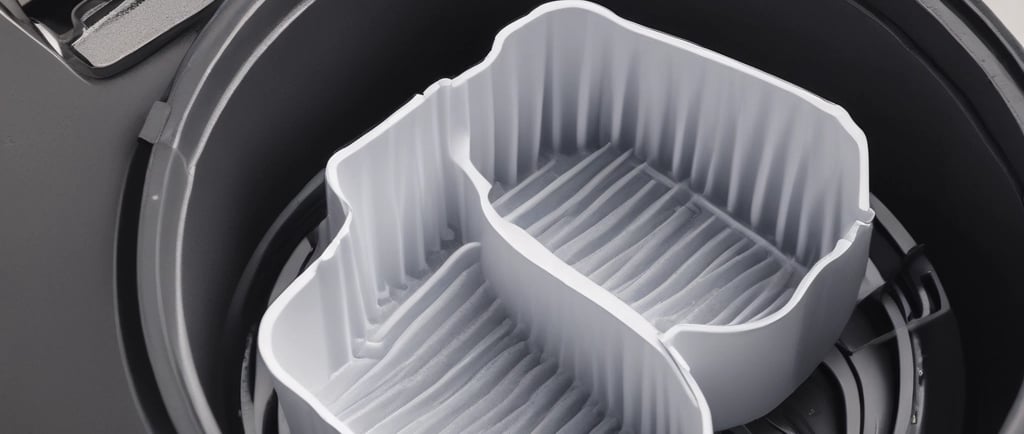Do You Really Need Silicone Liners? We Tried Them
BLOG NEWS
6/2/20253 min read


Benefits of Using Silicone Liners
Silicone liners offer a range of advantages that make them an increasingly popular choice among home cooks and baking enthusiasts. One of the most notable benefits is their remarkable non-stick properties. Unlike traditional baking surfaces, silicone liners prevent food from sticking, ensuring that baked goods release effortlessly. This quality not only simplifies the cooking process but also enhances the overall presentation of the finished product, which is particularly important for items such as cookies and delicate pastries.
In addition to their non-stick capabilities, silicone liners are exceptionally easy to clean. Unlike standard baking trays that may require scrubbing to remove stubborn residue, silicone liners can be quickly rinsed or placed in the dishwasher. This significant time-saving aspect makes them a practical option for busy individuals who enjoy cooking but may lack the time for extensive cleanup.
Heat resistance is another key attribute of silicone liners. They can withstand a broad temperature range, generally from -40°F to 450°F, making them suitable for various cooking methods, including baking, roasting, and even microwaving. This versatility means that one product can serve multiple purposes in the kitchen, reducing the need for a plethora of different cooking accessories.
Health-conscious bakers may appreciate how silicone liners contribute to healthier baking. By providing a non-stick surface, they reduce the need for added oils or fats, which can significantly lower the calorie and fat content of prepared dishes. Furthermore, silicone liners are a more eco-friendly alternative to disposable baking papers, as they can be reused countless times, thus minimizing waste and supporting sustainable kitchen practices.
Ultimately, the benefits of using silicone liners—from their reliable non-stick properties to their ease of maintenance and health advantages—make them a valuable addition to any kitchen toolkit.
Potential Downsides and Considerations
While silicone liners offer several advantages in cooking and baking, there are notable downsides and considerations to keep in mind before incorporating them into your kitchenware. One primary concern is the longevity of silicone products. Though silicone is designed to withstand a significant range of temperatures, it may not be as durable as traditional materials under certain conditions. Over time, prolonged exposure to high heat may cause the liners to degrade, compromising their functionality.
An additional factor to consider is the potential for staining. Certain foods, particularly those with strong pigments like beetroot or artificial coloring, can leave marks on silicone liners. While these stains do not affect the safety or usability of the liners, they might detract from their aesthetic appeal and make cleaning more challenging.
Moreover, silicone liners can react with specific foods or acids. For instance, cooking with highly acidic ingredients like tomatoes can sometimes lead to changes in taste or texture, which may not be desirable. In such cases, opting for high-quality silicone that is labeled as food-grade can minimize this risk, ensuring it does not impart any unwanted flavors or chemicals into your dishes.
It is essential to adhere to the manufacturer’s temperature guidelines when using silicone liners. Exceeding recommended temperature limits can lead to chemical leaching, which can be harmful. Selecting reputable brands offers extra assurance that the silicone has been tested for safety and quality. Ultimately, silicone liners can be a great addition to your kitchen, but understanding their limitations and potential drawbacks can inform your decision-making process, ensuring a practical and safe cooking experience.
Personal Experience and Recommendations
Throughout my journey of exploring silicone liners, I had the opportunity to test a range of options that varied not only in quality but also in functionality. These silicone baking liners are marketed as non-stick, reusable alternatives to traditional parchment paper, promising an array of benefits for home cooks. I utilized different types for various recipes, including baking cookies, roasting vegetables, and even baking a cake.
One of the most surprising outcomes was the uniform cooking experience when using silicone liners. Unlike conventional baking sheets, where food can stick or fail to cook evenly, the silicone's non-stick surface ensured that cookies released perfectly with minimal effort. Additionally, the flexibility of these liners allowed for easy storage and cleaning. Even though I was initially skeptical about their durability, after multiple uses, I found that they held up remarkably well, retaining their shape without any signs of wear.
However, it is essential to note that not all silicone liners are created equal. For example, some cheaper options did not perform as expected, leading to slight sticking issues or uneven cooking. I recommend investing in higher-quality silicone liners known for their temperature resistance and durability. Additionally, using parchment paper with silicone liners can enhance the ease of cleanup, especially for sticky recipes.
For home cooks considering an investment in silicone liners, it is wise to evaluate your specific baking habits. If you frequently bake items that require non-stick surfaces, such as cookies or pastries, silicone liners can be an excellent addition to your kitchen. Alternatively, if you primarily roast or bake infrequently, traditional options might suffice. In summary, my personal experience suggests that silicone liners can be a valuable tool, enhancing both the functionality and convenience of cooking, provided that you select reputable products suited to your culinary needs.
